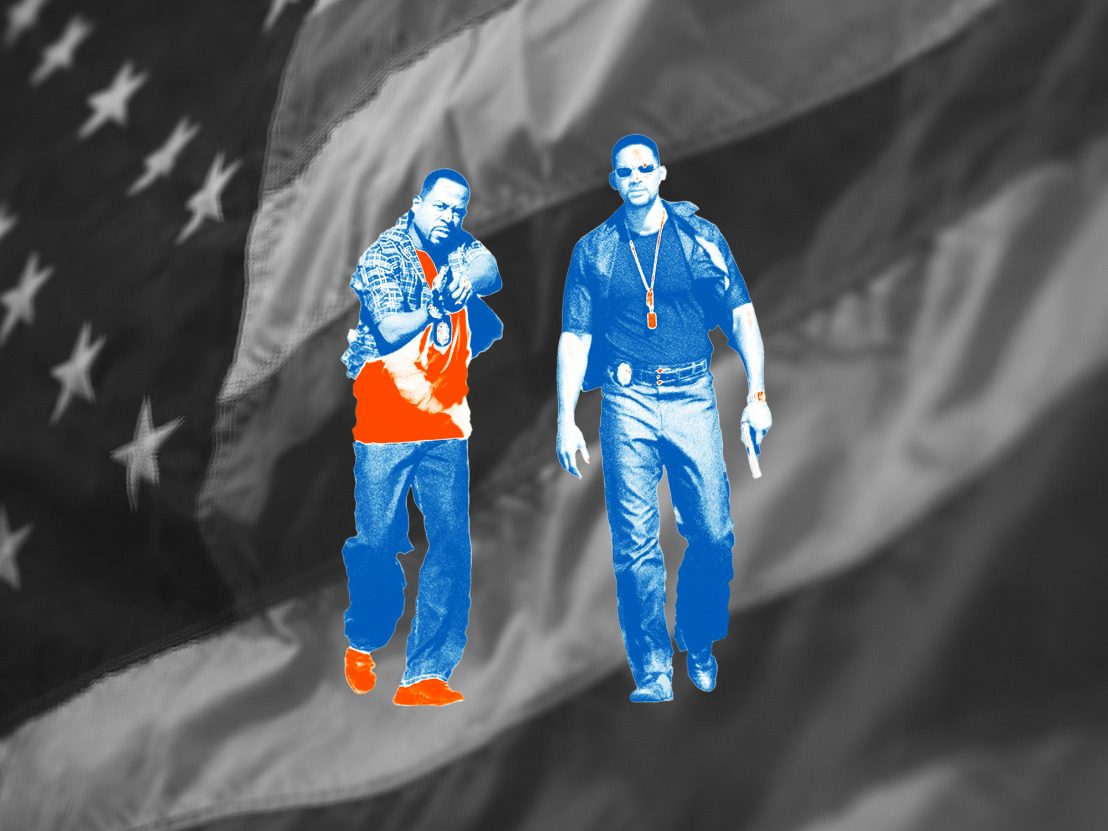
As Michael Bay spreads his name across a low-angle shot of a cross being engulfed in flame, it’s clear he knows his place in sacrilegious cinema. Bad Boys II (2003) is a confrontational exercise that scorches all it indulges in. Acidic excess pins the audience within their most vulgar impulses and creates a potent post-9/11 spectacle. Eight years after the events of Bad Boys (1995), Miami PD detectives Mike Lowery (Will Smith) and Marcus Burnett (Martin Lawrence) are hot on the trail of an ecstasy smuggling operation that spans from the KKK to a vicious Cuban drug Lord, also involving the Russian Mafia and Haitian Zoe Pound Gang.
Bad Boys II hates both humanity and its subjects. According to Michael Bay’s film, every human being on earth is corrupt, vengeful, and willing to violate at least half of the Ten Commandments. Pride brims for its dynamic duo despite their flaws (obscenely excessive force, for one) and understands their drives (animosity and fragile masculinity). In a movie full of explosions, Will Smith and Martin Lawrence are dynamite, able to carry extensive acerbic conversation. A scrambled mess of muddled procedure and tangential ties, the plot only becomes further incoherent as it unfolds instead of gaining any sort of clarity. Bad Boys II is about destruction and derangement, not creation, so it rides with the Boys and lays waste to everything else.
The saturated neon dimensional views disorient with the camera’s movement, flush with color so vivid it feels as if it will drip off the screen. Unlike other action directors who establish space and position firmly within a scene’s scope, Bay uses rapid-fire shot succession at varying expressive angles and distances within the locale, inset by breakneck editing. This technique causes eye movement to constantly shift from every point of the screen, briefly grasping the environment, before distorting it.
In one of the most gratuitous scenes in a gratuitous film, cars are thrown from a transport truck. The camera is attached to the hoods of the cars or chains themselves, making the visual points whip and faze. The point of view is from cars launched into chaotic destruction, metal crushing metal, mechanical structures collapsing into each other. At one point, a police car is flung directly into a camera, causing it to violently roll and land face down, photographing the crevices in the asphalt.
In establishing this point of view, one could assume that Bay is actively destroying the viewer, or at least scraping them up a bit, throwing them headfirst into this mayhem. In another jarring display of technical excess, Mike (Smith) stands on one side of a wall, gangsters on the other. The camera swings in a revolving motion, passing through the double doors on either side of the wall separating these dueling individuals, encircling the subjects. It’s a dizzying prelude to Bay’s modern interest in swooping, dazzling, and daring drone use in some of his recent films, most notably Ambulance (2022).
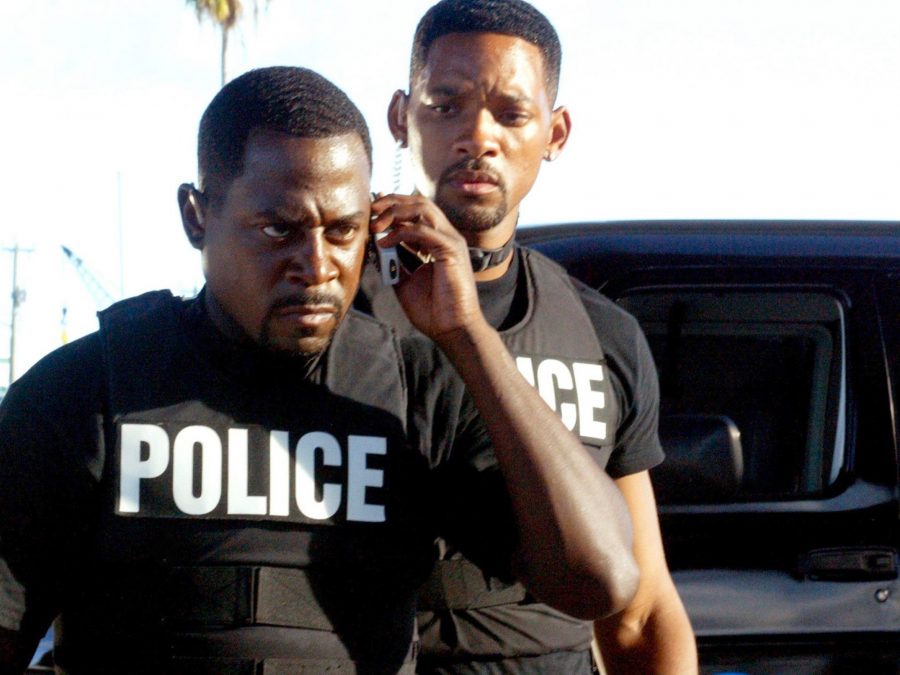
The film’s blistering obscenity is blatantly racist, misogynistic, and homophobic at times. So unenlightened in its reasoning and deployment of these ideals that it aligns with the base nature of the film itself. Any and all approaches to address ingrained hostility are mocked. As a tactic meant to reduce anger in the heat of a moment, the made-up mantra, “woosah” is used repeatedly as comedic relief. Even a small attempt to manage the toxicity in which the Boys are embedded is fodder for a joke. A second car chase involves a van loaded with bloated cadavers which are thrown from the vehicle as obstacles, a grotesque gag. The one woman in the film, Syd (Gabrielle Union), is treated as an object to be bickered over and ultimately won.
Bad Boys II is a demonstration of excessive force, both artistically and ideologically. A post-9/11 response in an era where the war on foreign entities infiltrating civilized American society called for uncivilized tactics. A time when ends always justify means. The absurdity of this militarized mindset is exemplified by the ridiculous extremes and abundant casualties left in the wake of these two officers. Michael Bay is known for explosive American spectacle. His films often involve the US military or police in fantastical, heroic demonstrations of force.
Taken at face value, it is endorsement or powerful propaganda. But perhaps unintentionally, Bad Boys II becomes an indictment of police militarization. The Boys chase Cuban drug lord Johnny Tapia (Jordi Mollà) across Guantanamo in the finale. While creating a film that serves as a warning for outsiders invading domestic soil, Bay “borrows” a famous stunt from a foreign film wholesale. In a scene stolen directly from the Hong Kong action film, Police Story (1985), the Boys destroy a hillside residence by driving directly over the homes, crushing them in their ostentatious yellow Hummer. A one-take feat back in 1985 is recycled here as domestic heroes literally crushing the lives of foreign peoples.
All of this leads to a standoff at none other than Guantanamo Bay. Landmines and guards occupy the edges of the screen with our heroes, wielding automatic rifles, centered in front of a silo adorned with “US NAVY”. It is one of the most explicitly reactionary films to emerge immediately post-9/11, but so sincere in its depiction of that singular temperament at the time. In retrospect, it is a showcase of the high-alert mindset that had settled among the American public in the aftermath of destructive, large-scale tragedy.
Bad Boys II becomes so monotonous in its stylistic and ideological extremity, yet manages to surprise at every exhaustive turn. The chaos buoys an extensive exertion of action filmmaking’s capacity for vulgar innovation. For those of us who revel in Bay’s caustic syrup, we wear ourselves out and drown among the wreckage.
Published 9 Oct 2023
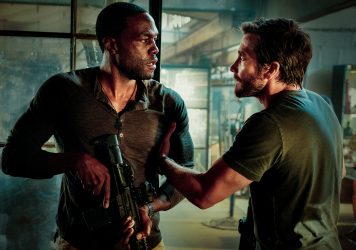
Michael Bay returns to the multiplex with a high octane thriller involving a bank robbery and a stolen ambulance.
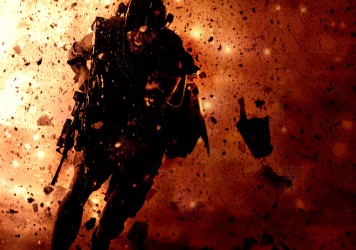
The necessary evil of shooting bad guys is the subject of this heinous new offering from Michael Bay.
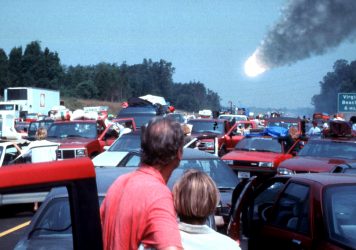
By Harry Harris
Though similar, there are marked differences between these twin films – and the fates of their respective directors.